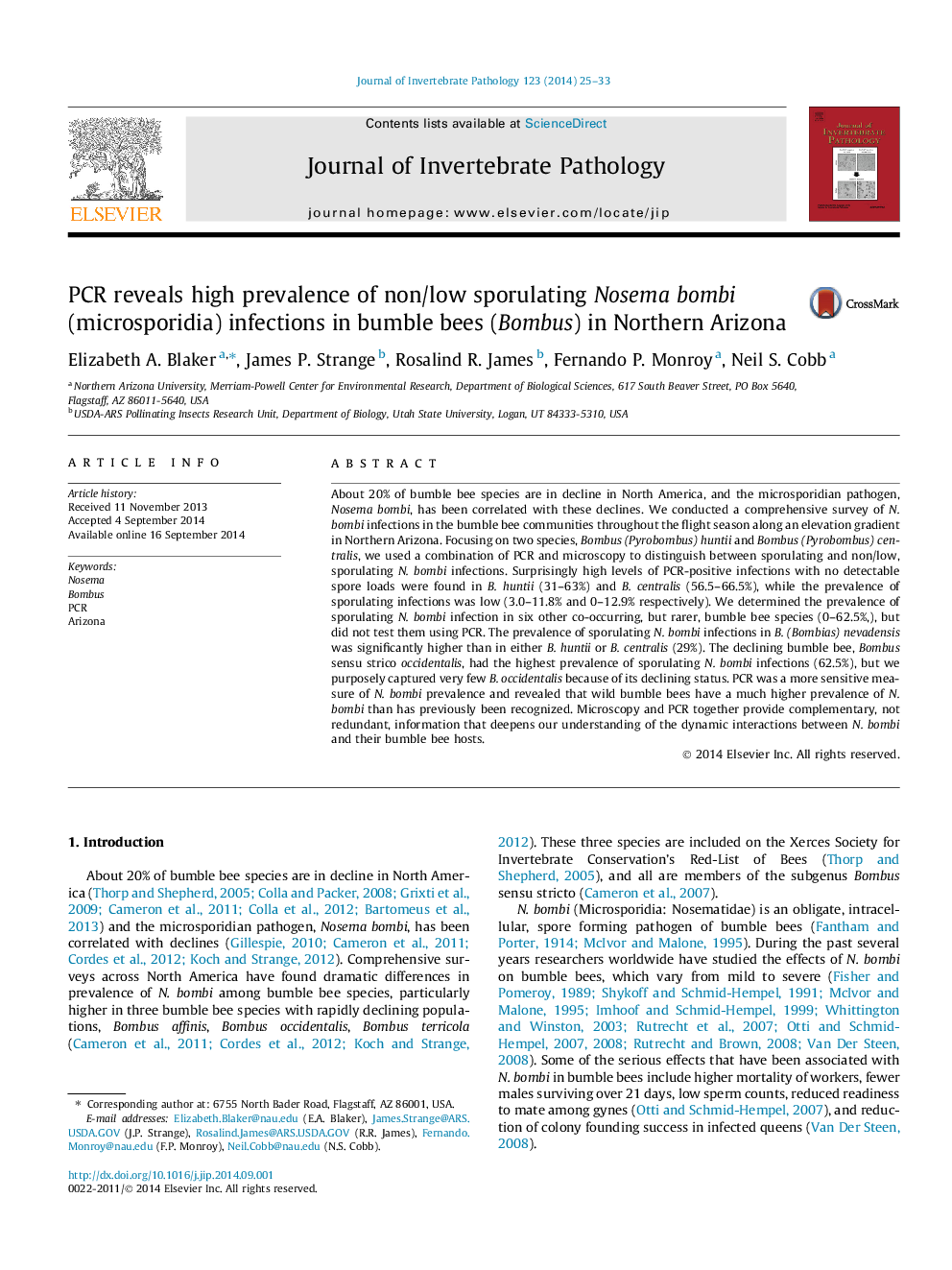| کد مقاله | کد نشریه | سال انتشار | مقاله انگلیسی | نسخه تمام متن |
|---|---|---|---|---|
| 4557663 | 1628229 | 2014 | 9 صفحه PDF | دانلود رایگان |

• Bumble bees were surveyed at three elevation zones in Northern Arizona.
• Non/low sporulating N. bombi was detected by combining PCR and microscopy.
• The prevalence of non/low sporulating N. bombi was high.
• Nosema bombi was more prevalent in B. nevadnesis than B. huntii or B. centralis.
About 20% of bumble bee species are in decline in North America, and the microsporidian pathogen, Nosema bombi, has been correlated with these declines. We conducted a comprehensive survey of N. bombi infections in the bumble bee communities throughout the flight season along an elevation gradient in Northern Arizona. Focusing on two species, Bombus (Pyrobombus) huntii and Bombus (Pyrobombus) centralis, we used a combination of PCR and microscopy to distinguish between sporulating and non/low, sporulating N. bombi infections. Surprisingly high levels of PCR-positive infections with no detectable spore loads were found in B. huntii (31–63%) and B. centralis (56.5–66.5%), while the prevalence of sporulating infections was low (3.0–11.8% and 0–12.9% respectively). We determined the prevalence of sporulating N. bombi infection in six other co-occurring, but rarer, bumble bee species (0–62.5%,), but did not test them using PCR. The prevalence of sporulating N. bombi infections in B. (Bombias) nevadensis was significantly higher than in either B. huntii or B. centralis (29%). The declining bumble bee, Bombus sensu strico occidentalis, had the highest prevalence of sporulating N. bombi infections (62.5%), but we purposely captured very few B. occidentalis because of its declining status. PCR was a more sensitive measure of N. bombi prevalence and revealed that wild bumble bees have a much higher prevalence of N. bombi than has previously been recognized. Microscopy and PCR together provide complementary, not redundant, information that deepens our understanding of the dynamic interactions between N. bombi and their bumble bee hosts.
Figure optionsDownload as PowerPoint slide
Journal: Journal of Invertebrate Pathology - Volume 123, November 2014, Pages 25–33